Today, pearls are regarded as both classic and contemporary, coming in many more fashionable styles than your grandmother’s traditional strand of pearls, Learning about types of pearls is important when adding items to your jewelry collection, let's check this article about what's the difference between them.
Natural Pearls
A natural pearl is formed when a small irritant or parasite penetrates and lodges in the mantle tissue of a mollusk. In response, the “invaded” tissue secretes a protective substance called nacre, a combination of crystalline and organic substances that builds and eventuallyafter a few years develops into a pearl. Natural pearls are rare and require serious persistence to find.
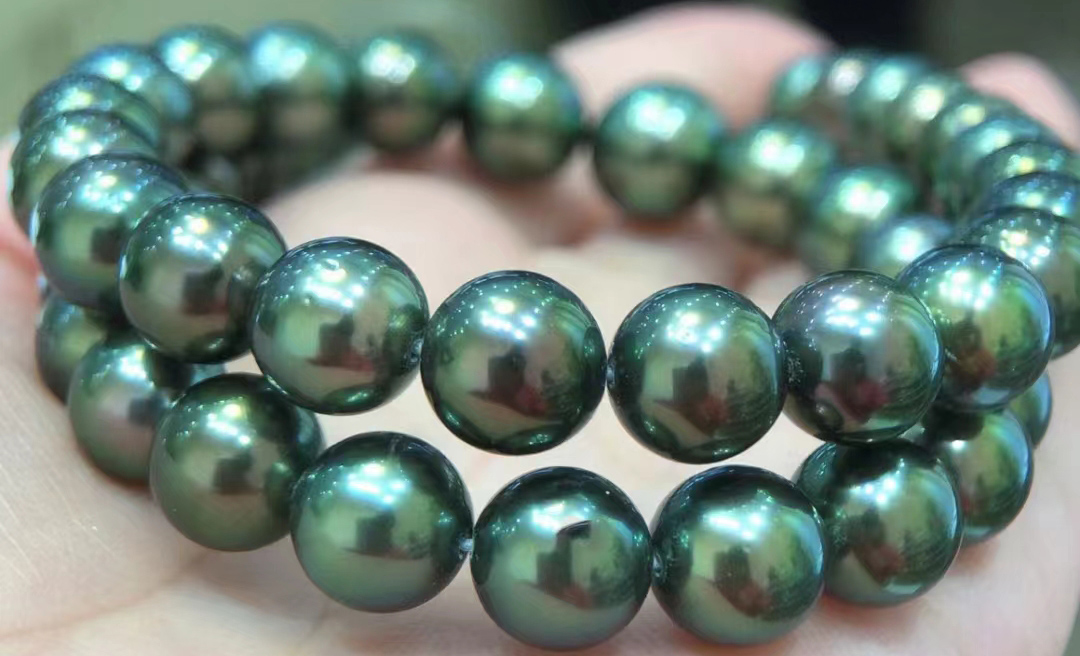
Natural Tahitian Pearls Peacock green color
Cultured Pearls
A cultured pearl results from the process by which a pearl farmer induces pearl formation by inserting an irritant into the mollusk and then “cultivating” the pearl. Cultured pearls are real pearls that were not formed by accident of nature. Most pearls sold today are cultured. Note: Edible oysters do not produce nacre and thus do not produce pearls, so there’s no need to put them through an MRI before eating.
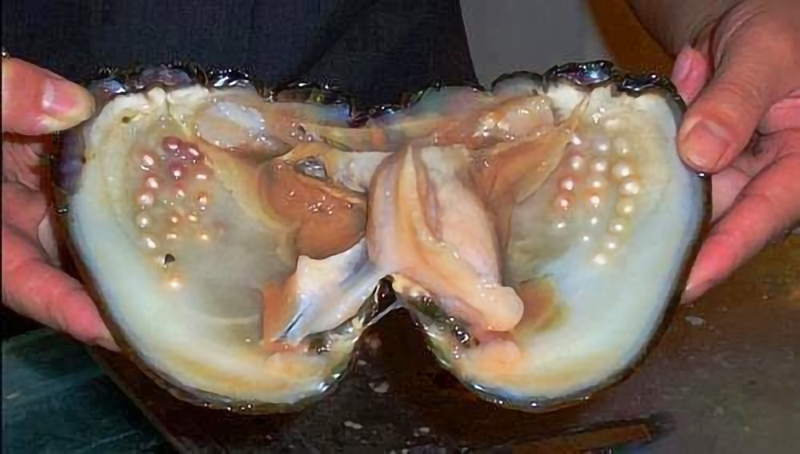
Cultured Freshwater Pearls in the oysters
Freshwater Pearls
Freshwater pearls come from oysters that mature in non-saline water (from lakes or ponds, as opposed to saltwater from the sea). Freshwater pearls usually are not as round as saltwater pearls and therefore less expensive. However, the past two decades have seen a huge increase in their quality for a number of reasons, but mostly because in the mid-1990’s the pearl-farming industry changed the type of mussels they used and lowered the number of grafts inserted in the mussel, and thereby the number of pearls produced. Freshwater pearls today are a favorite of jewelry designers because of their lower cost and improved quality and availability.
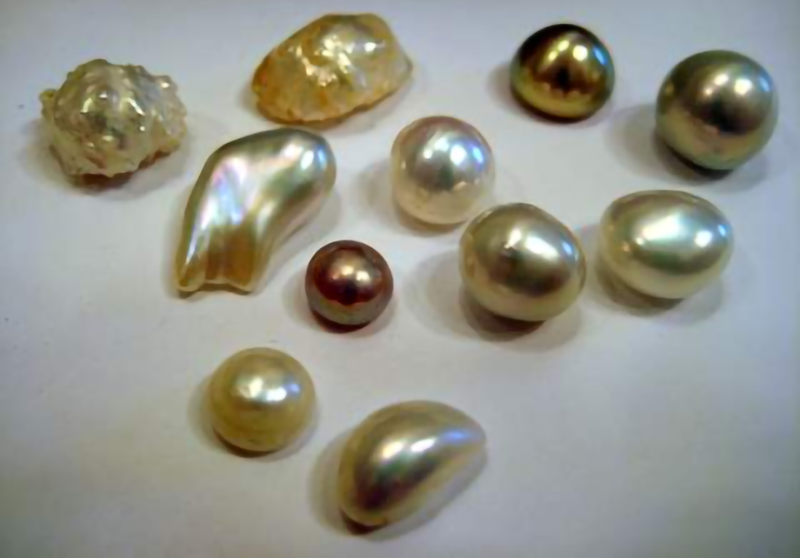
Freshwater pearls with many shapes
Shell Pearls
Shell Pearls are made from the inner lining of oyster shells, also known as Mother of Pearl. The substance is ground to a fine powder, shaped, dyed and coated with natural pearl nacre and then a protective coating to give it lustre. Shell pearls, like most everything, vary in quality but may be quite beautiful and much less expensive than saltwater pearls. In addition, the industry’s strict quality control ensures shell pearls will keep their color and shine and will not be affected by sweat and perfume. Indeed, they are more durable than cultured and freshwater pearls.
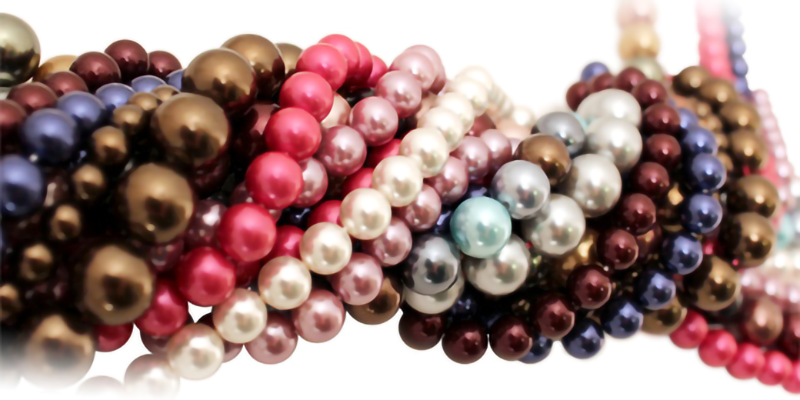
Different colors shell pearls
Edison Pearls
The pearls are named after the great inventor, Thomas Edison, who for all his intelligence and innovation, said “There are two things which couldn’t be made at my laboratory – diamonds and pearls.”
The jewelry world has since gone on to do both these things and with great results. Edison pearls are one of the latest in a long line of pearl innovations and the name Edison is a reminder that what can be seemingly impossible, can be done.
Edison pearls were created by the Zhan siblings who come from a family with over 40 years’ experience in the pearl industry. The research for Edison pearls took many years and an enormous budget but the outcome has been highly lauded. Edison pearls were first sold in 2010 and has since carved a name for itself as a high-end pearl variety.
Edison pearls are actually very simple, freshwater pearls with cores. Traditional freshwater pearls are seedless and uncontrollable in shape, with few being large and round. And seawater pearls are all nuclear, big and round (Akoya is small, mabe is big and flat), and the high-end atmosphere is high-end. In order to change the fate of freshwater pearls, aquaculture companies have learned from the cultivation technology of seawater pearls and cultivated a new type of freshwater pearls with nucleus. This is a huge innovation to traditional freshwater pearls, so it is named "Edison pearls".
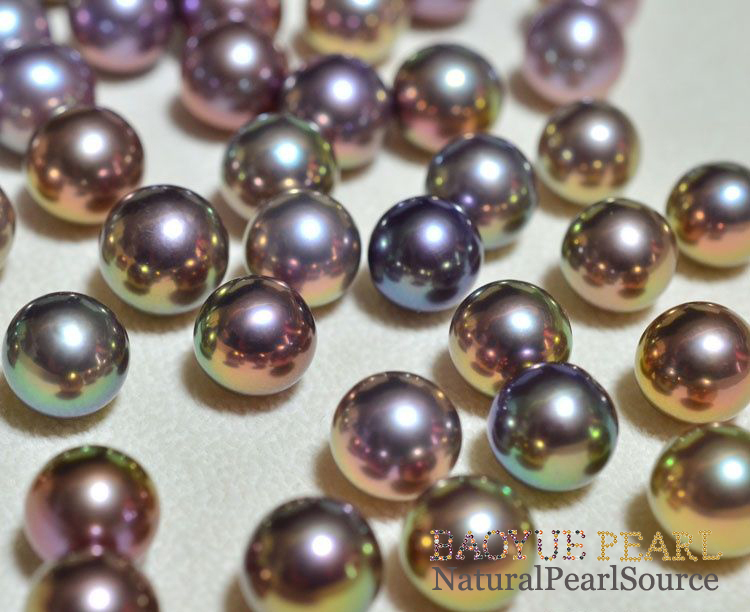
Sparkling Edison pearls comparable to Tahitian pearls
Edison pearls, usually single cultured (one mussel cultured for one pearl), are cultured in the same way as South Sea seawater pearls (South Sea gold pearls, Australian white pearls, Tahitian black pearls). Because it has a nucleus, it can be round and large. The roundness and size are also similar to those of South Sea seawater pearls. The difference between the two is that Edison pearls are cultured in freshwater, and their mothers are mussels; South Sea pearls are cultured in seawater, and their mothers are seashells. Due to the different species of mother oysters and the water in which they are cultured, the colors of the pearls are also different. South Sea pearls are mainly white, black and gold, and Edison pearls are white, pink and purple, which are the same as ordinary non-nuclear freshwater pearls.
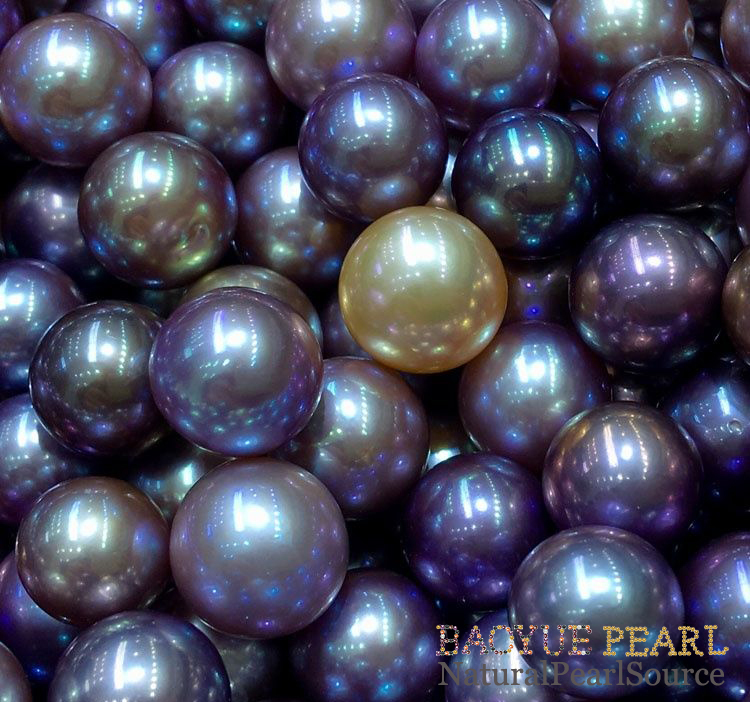
Edison's Demon Purple Pearl, a color complement to high-end seawater pearls
Edison pearls, usually single cultured (one mussel cultured for one pearl), are cultured in the same way as South Sea seawater pearls (South Sea gold pearls, Australian white pearls, Tahitian black pearls). Because it has a nucleus, it can be round and large. The roundness and size are also similar to those of South Sea seawater pearls. The difference between the two is that Edison pearls are cultured in freshwater, and their mothers are mussels; South Sea pearls are cultured in seawater, and their mothers are seashells. Due to the different species of mother oysters and the water in which they are cultured, the colors of the pearls are also different. South Sea pearls are mainly white, black and gold, and Edison pearls are white, pink and purple, which are the same as ordinary non-nuclear freshwater pearls.
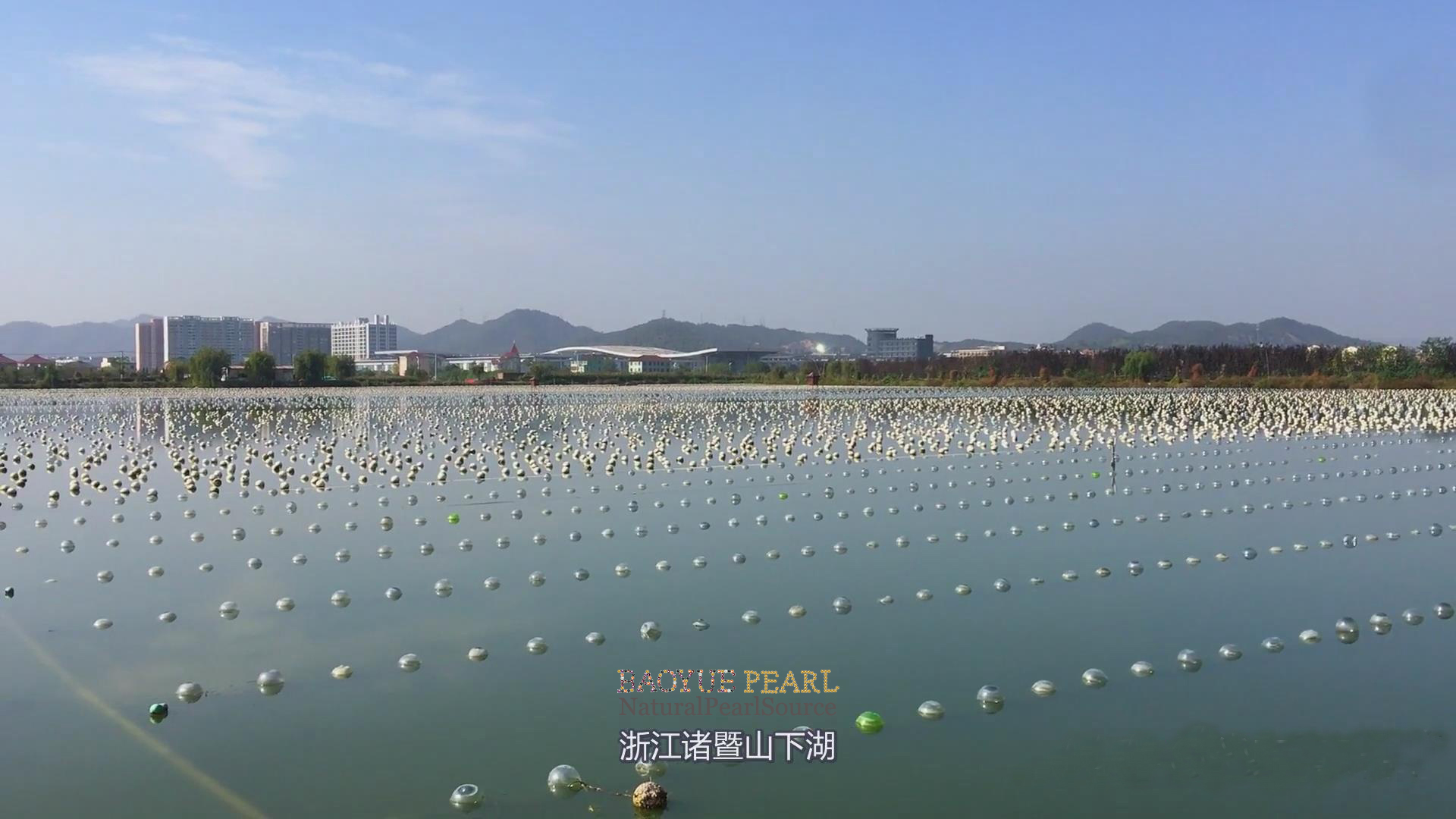
Edison Pearl Large Modern Farm
For a long time, fresh water has really been traditional seedless culture. Pearls are naturally grown and formed, so the shape is uncontrollable. Most of them are crooked melons and jujubes. Many have no decorative value and can only be used for medicinal purposes. The second is a large number of flat round and rice-shaped, very few round, and even fewer high-quality balls.
Due to historical reasons, China's pearl culture focuses on scale and production, and does not pay enough attention to the pursuit of quality. The rivers, lakes and reservoirs suitable for cultivating freshwater pearls in China have vast waters, abundant labor resources, and inexhaustible biological resources for mother-of-pearl mussels. Rare is more valuable, this is the eternal truth. There are so many freshwater pearls, and most of them are of poor quality, so it is difficult for this variety to be related to the high-end. China's pearl production accounts for 90% of the world's production, but only 10% of the output value. In fact, it is not only pearls, but many industries are like this. In the early stage of development, the emphasis is on quantity and less on quality. This is a process from scratch to excellence.
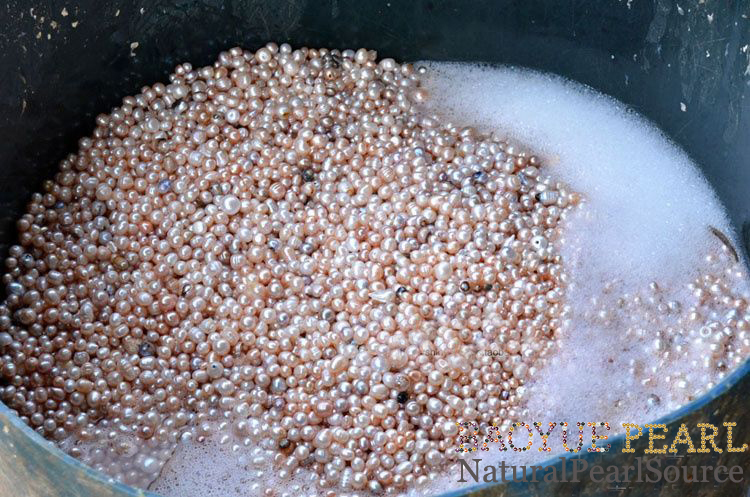
Edison freshwater pearls
The "nucleation" of freshwater pearls is actually in line with international standards. Because in addition to the traditional non-nucleated freshwater pearls, all cultured pearls are nucleated. In this age where we don't mind breast augmentation, butt augmentation, and cosmetic surgery, it's not a big deal that a pearl has a nucleus in it. As long as it is big enough, round enough, and bright enough, it is high quality. Therefore, in the future, seedless freshwater pearls will become less and less, and may even disappear.
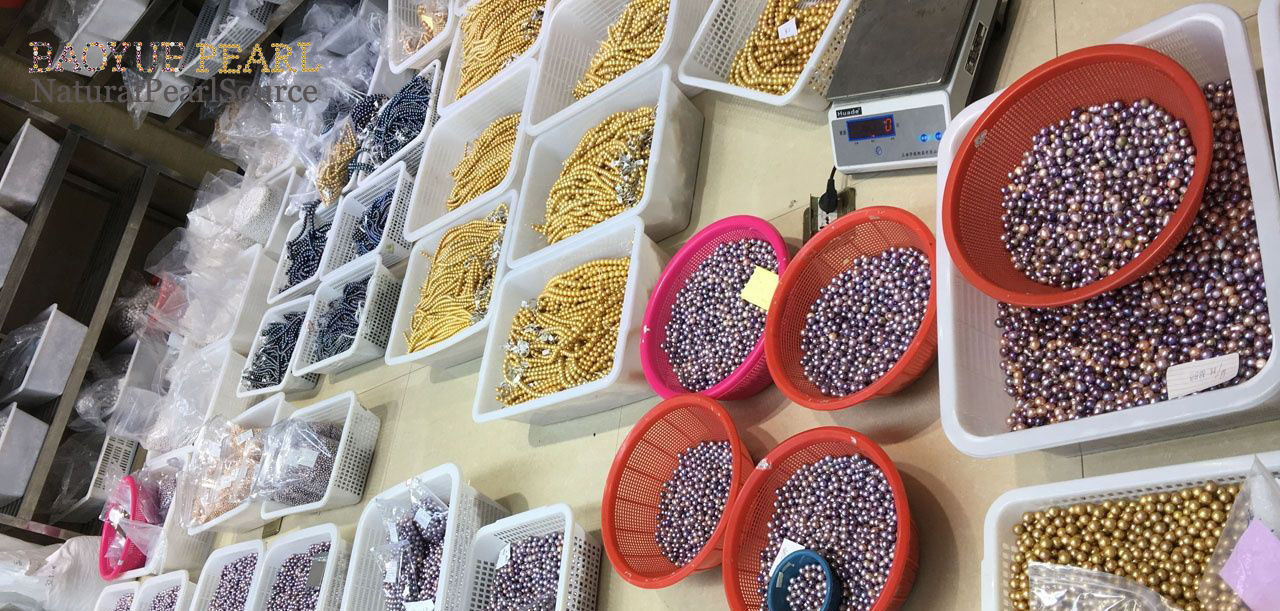
Edison freshwater pearls
So how do you tell them apart?
Well, the EASIEST way is the price, because even wholesalers can't get Tahitian or South Sea Pearls for the ultra-reasonable amounts these man-made Sea Shell Pearls are being sold for. However, smarter sellers are charging higher prices, figuring to fool the buyer into thinking they are getting some $10,000 pearls for only $100.
Real Tahitian Black Pearls are expensive... price tag for a nice strand is a cool $14,900.
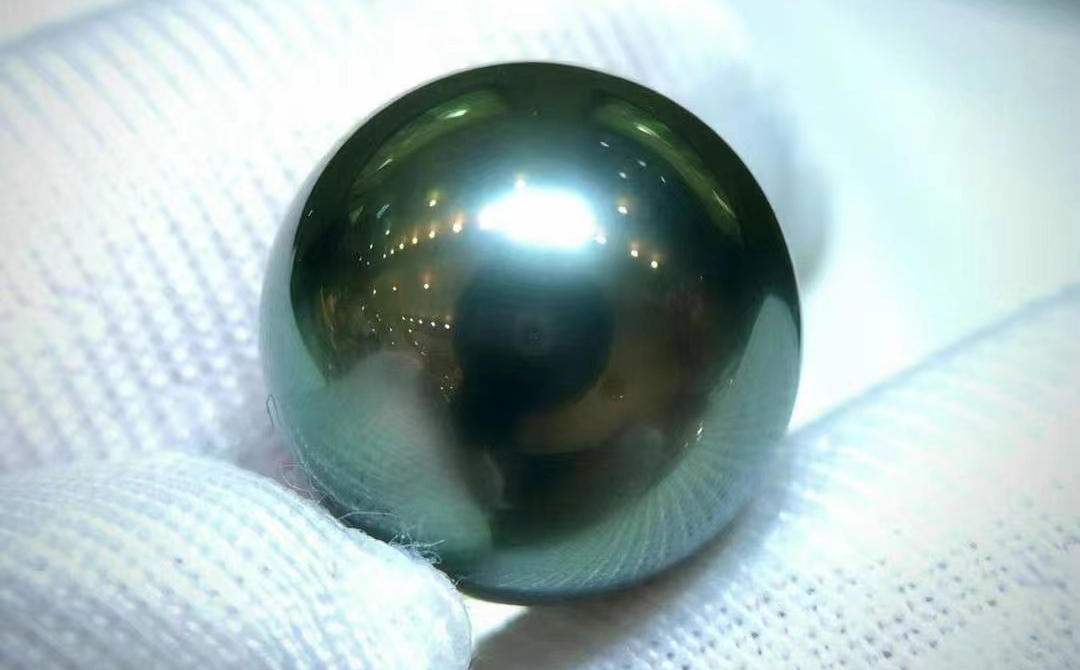
Gem Tahitian Pearl Peacock green Color.
Another way to tell if the pearls are real or man-made is the color. Natural pearls don't come in electric blue, vivid pink, or apple green. Pearls can be dyed, of course, but no one in their right mind would think of dying a string of pearls worth thousands of bucks! Real pearls come in the color of the nacre that the oyster or mussel produces...usually white, dark silver, teal/peacock, light silver, gold, grey, or white with overtones of blue, pink, or silver.
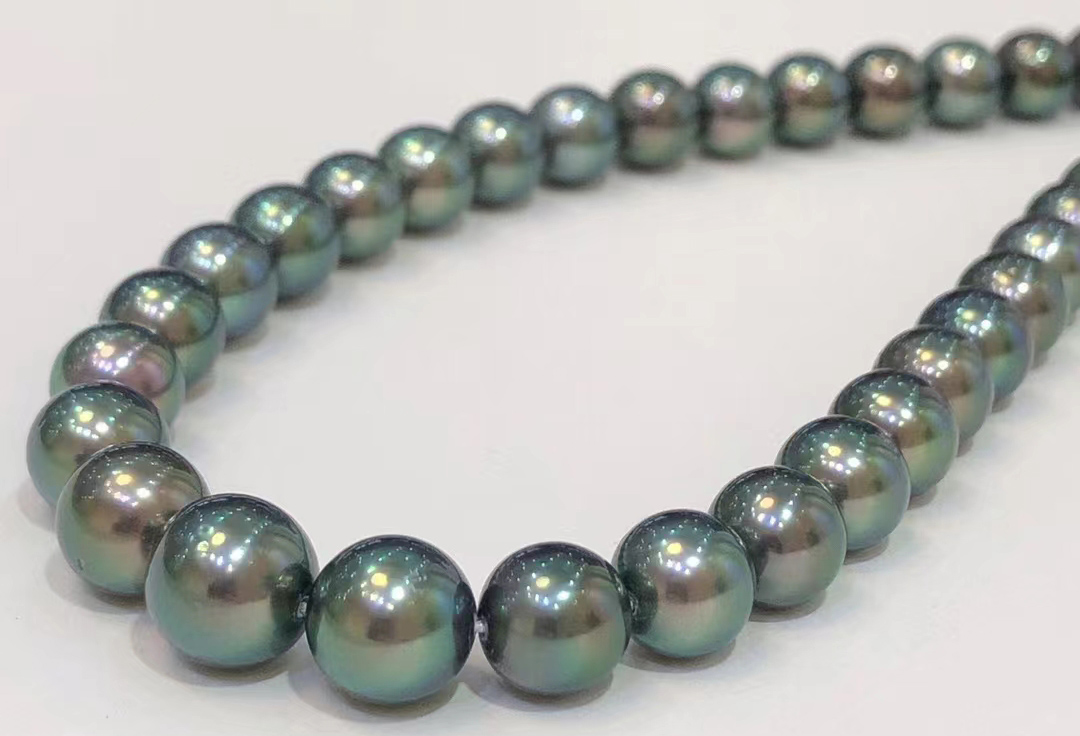
A little extra technical information:
Tahitian Black pearls come from the black-lipped oyster, ( Pinctada margaritifera) in the islands of French Polynesia. The oyster itself is quite large -- sometimes over 12 inches across and weighing as much as 10 pounds -- which often results in much larger-than-average pearls. The pearls are unique because of their natural dark colors.
South Sea pearls come from the oyster called Pinctada Maxima. There are two varieties of Pinctada maxima: the silver-lipped and the gold-lipped. The two are distinguished by the coloration of the outer edge of the interior. Hence, the lovely silver and gold coloring of the pearls. These oysters grow up to 12 inches in diameter, and can be nucleated with a much larger bead than other saltwater oysters such as the Akoya. Hence, the huge size of South Sea Pearls !
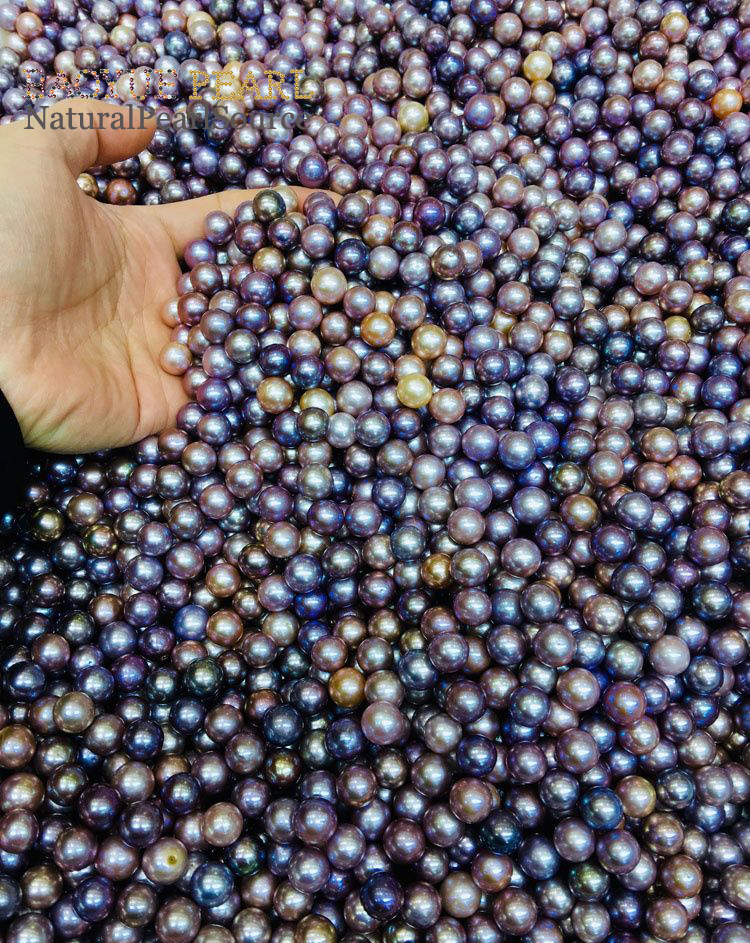
High Quality Edison Pearls with good luster.
Edison pearls were created to rival the prestigious South Sea pearls from Australia, much like freshwater pearls have become a more affordable alternative to Akoya pearls. They were first introduced in 2014, with the initial pearls priced very high but today they’re known as affordable alternatives to South Sea pearls.
Features of Edison Pearls
1. Big and round. Because it is cultured with nuclei, the individual Edison pearls are larger than those of non-nucleated freshwater pearls, especially the roundness is good, and the proportion of round pearls is significantly increased.
2. Breeding technology requires high requirements and high cost, which forces breeding companies to concentrate resources and energy and implement refined management. As a result, the quality of pearls has been greatly improved. Edison pearls are not only large and round, but also have good luster and beautiful color. Of course, there is still room for improvement in this regard. After all, the cultivation of nuclear freshwater pearls started late, and the accumulation of technology and experience is still relatively weak.
3. The advantage of breeding scale ensures the price advantage of Edison pearls. High-quality Edison pearls have caused a great impact on South Sea seawater pearls in the international market, and this impact will continue to expand.
If you need to get more information about Natural Pearls, Cultured Pearls, Freshwater Pearls, Shell Pearls and Edison Pearls information. feel free to contact us. BAOYUE PEARL supply big quantity natural freshwater pearls, South sea Pearls, Edison Pearls, Akoya pearls and Tahitian Pearls with farm direct prces.


 WhatsApp Code
WhatsApp Code